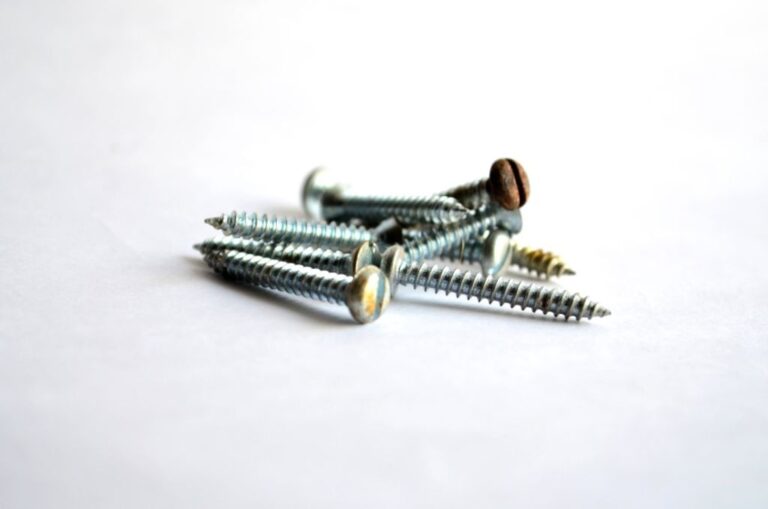“Trimming Triumph: What Nails to Use for Trim”
Deprecated: mb_convert_encoding(): Handling HTML entities via mbstring is deprecated; use htmlspecialchars, htmlentities, or mb_encode_numericentity/mb_decode_numericentity instead in /home/u654140373/domains/nailinspire.com/public_html/wp-content/plugins/kadence-pro/dist/elements/elements-init.php on line 1267
Deprecated: Function utf8_decode() is deprecated in /home/u654140373/domains/nailinspire.com/public_html/wp-content/plugins/kadence-pro/dist/elements/elements-init.php on line 1275
Trim carpentry is an essential aspect of finishing work in construction and woodworking. When it comes to trim installation, choosing the right nails is crucial for achieving a professional and durable result. In this article, we will explore the various types of nails used for trim work, the factors influencing nail selection, and the best practices for nail installation.
Key Takeaways
- Selecting the right nail size is important for ensuring the strength and stability of the trim installation.
- Consider the material composition and finish of nails to prevent corrosion and ensure longevity of the trim.
- Nail guns offer efficiency and speed in trim installation, but hand nailing allows for greater precision and control.
- Proper nailing techniques can help prevent wood splitting and ensure a flawless finish.
- Addressing common nailing issues such as nail pops and tight spaces is essential for a professional trim installation.
Understanding Trim Carpentry

The Basics of Trim Work
Trim carpentry is an essential aspect of finishing a room, providing both aesthetic appeal and functional benefits. Trim work involves the installation of moldings to cover transitions between surfaces and for decorative purposes. Common types of trim include baseboards, door and window casings, and crown molding.
When approaching trim installation, it’s important to understand the tools and materials required for the job. A key component is selecting the appropriate nails, which will vary based on the trim’s material, size, and the underlying wall structure. For example, a thinner trim may require a smaller gauge nail to prevent splitting, while a more substantial piece of molding might need a larger nail for secure attachment.
Proper measurement and cutting are crucial to achieving tight joints and crisp corners, which are hallmarks of professional-quality work. Here are some basic steps to follow:
- Measure the wall and trim pieces accurately.
- Cut the trim to the required length, minding the angles for corners.
- Dry fit the trim to ensure a snug fit before nailing.
Tip: Always leave a small expansion gap between the trim and the wall to allow for material movement due to changes in humidity and temperature.
Types of Trim and Their Purposes
Trim carpentry is not only about aesthetics but also about functionality. Each type of trim serves a specific purpose, from concealing joints and imperfections to enhancing the visual appeal of a room. Baseboards, for example, protect the bottom of the wall from wear and tear, while crown molding adds a touch of elegance to the ceiling line.
The following list outlines some common types of trim and their primary functions:
- Baseboards: Shield walls from kicks, bumps, and cleaning tools.
- Crown Molding: Creates an attractive transition between walls and ceilings.
- Chair Rail: Protects walls from scuffing and provides a decorative division.
- Window and Door Casings: Frame openings and provide a finished look.
- Picture Rail: Allows for picture hanging without damaging the wall.
Tip: When selecting trim, consider both the practical and decorative aspects to ensure a harmonious design.
Understanding the role of each trim type is crucial for making informed decisions about materials and installation methods. The right trim can elevate the style of a space while fulfilling its intended purpose, making it an essential component in the overall design of a room.
Selecting the Right Nail for the Job

Factors Influencing Nail Choice
Selecting the right nail for trim work is not a one-size-fits-all decision. Several factors must be considered to ensure the nail’s performance matches the demands of the project. The thickness and type of trim, the material it’s being attached to, and the desired finish all play critical roles in nail selection.
- Thickness of Trim: Heavier and thicker trim requires larger nails to provide adequate holding power.
- Material Compatibility: Nails must be compatible with both the trim and the substrate to prevent corrosion or staining.
- Finish Requirements: The nail head type and size can affect the final appearance of the trim work.
Tip: Always consider the end goal of your trim installation. Aesthetics are important, but never at the expense of structural integrity.
Environmental conditions, such as humidity and temperature, can also influence the choice of nail. For example, stainless steel nails are preferred in high-moisture areas to prevent rust. Understanding these factors will guide you to the best nail for your specific trim carpentry needs.
Nail Sizes and Their Applications
Choosing the correct nail size is crucial for trim work to ensure a secure fit without damaging the wood. Nails are typically measured in pennies, denoted as ‘d’, a historical term that dates back to the Roman denarius. Here’s a quick guide to the most common sizes and their applications:
- 6d (2-inch) nails are often used for baseboards, chair rails, and other light trims.
- 8d (2.5-inch) nails are suitable for thicker trims such as door jambs.
- 10d (3-inch) nails are used for heavy-duty applications where extra holding power is needed.
Tip: Always choose a nail length that is three times the thickness of the trim material to ensure a solid hold without protruding through the back.
Remember that the nail size affects the trim’s final appearance and structural integrity. It’s essential to select the size that matches the trim’s thickness and the project’s overall requirements.
The Role of Nail Composition in Trim Work

Material Matters: Steel vs. Stainless vs. Galvanized
When selecting nails for trim work, the material composition is a critical factor that affects both the durability and the aesthetic outcome of the project. Steel nails are a common choice due to their strength and cost-effectiveness. However, they are prone to corrosion when exposed to moisture, which can lead to staining and weakening of the trim over time.
Stainless steel nails, on the other hand, offer superior corrosion resistance, making them ideal for areas with high humidity or direct water contact. They are more expensive but provide long-term value by maintaining their integrity and appearance.
Galvanized nails are treated with a zinc coating to protect against rust. While not as resistant as stainless steel, they are a good compromise between cost and durability. It’s important to choose the right type based on the environment and exposure the trim will face.
Tip: Always consider the specific conditions of your project when choosing nail materials. For example, in coastal areas or bathrooms, stainless steel may be the best option to prevent rust and ensure longevity.
The Impact of Nail Finish on Trim Installation
The finish of a nail can greatly influence the final appearance and longevity of trim work. Bright finished nails are a common choice for interior trim due to their smooth, uncoated surface which makes them less visible once installed. However, they are more susceptible to corrosion if exposed to moisture, making them less ideal for areas like bathrooms or kitchens.
For areas prone to higher humidity, a stainless steel or galvanized finish is recommended. These nails have undergone a process to resist rust, ensuring that the trim remains secure and aesthetically pleasing over time. Here’s a quick guide to nail finishes:
- Bright: Best for dry, interior environments.
- Stainless Steel: Ideal for high moisture areas, both indoors and outdoors.
- Galvanized: Suitable for exterior trim work, resistant to weathering.
Tip: Always consider the environment where the trim will be installed when selecting nail finishes. This foresight can prevent future issues such as staining or wood damage due to corroded nails.
Nail Guns vs. Hand Nailing: A Comparative Analysis

Efficiency and Precision in Trim Installation
When it comes to trim installation, the choice between using a nail gun and hand nailing is not just about speed; it’s also about the precision and quality of the work. Nail guns offer efficiency in driving nails consistently and quickly, which is particularly beneficial in large projects or when time is of the essence. Hand nailing, on the other hand, provides a level of control that some craftsmen prefer, especially in delicate areas or with intricate trim work.
Tip: Always ensure the nail gun’s pressure is correctly adjusted to avoid driving nails too deep or not deep enough, which can affect the trim’s appearance and integrity.
The decision also hinges on the type of trim being installed. Here’s a quick guide to help you choose the right method:
- For baseboards and crown moldings, a nail gun can save time and reduce labor.
- Detailed or delicate trim may benefit from the finesse of hand nailing.
- In areas where precision is paramount, such as near glass or in tight corners, hand nailing offers superior control.
Ultimately, the choice should be based on the specific requirements of the job and the finish quality desired by the client. Balancing speed with accuracy is key to a successful trim installation.
Choosing the Right Nail Gun for Trim Work
Selecting the appropriate nail gun for trim work is crucial for both the quality of the installation and the efficiency of the process. The two primary types of nail guns used in trim carpentry are the brad nailer and the finish nailer. Brad nailers are ideal for attaching lightweight trim pieces without the risk of wood splitting, using smaller 18-gauge nails. Finish nailers, on the other hand, are designed for heavier trim work, utilizing 15 or 16-gauge nails to secure larger pieces such as door and window trim.
When choosing a nail gun, consider the following factors:
- The size and type of trim you are installing.
- The material of the trim and the underlying surface.
- The desired balance between holding power and hole visibility.
Tip: Always test the nail gun on a scrap piece of trim to ensure the depth setting is correct and to prevent marring the finish of your work.
Remember, the right tool can make all the difference in achieving a professional and lasting finish. Take the time to match the nail gun to the specific requirements of your trim project for the best results.
Advanced Tips for Professional Trim Installation

Mitigating Wood Splitting with Proper Nailing Techniques
Wood splitting during trim installation can be a frustrating issue, but with the right techniques, it can be significantly reduced. The key is to choose the correct nail size and to pre-drill holes, especially when working near the ends of the trim. Pre-drilling prevents the wood from being forced apart by the nail, which is a common cause of splitting.
When nailing trim, it’s also important to consider the direction of the wood grain. Nailing perpendicular to the grain increases the risk of splitting, so aim to nail with the grain wherever possible. Additionally, using a nail set to finish driving the nail below the surface can help minimize stress on the wood.
- Use thinner nails for delicate trim work to reduce splitting.
- Space nails appropriately, typically 12 to 16 inches apart, to provide adequate hold without overcrowding.
Tip: Always use sharp, high-quality nails and keep your nail gun or hammer in good condition to ensure clean, precise nailing that won’t damage the trim.
Achieving a Flawless Finish: Countersinking and Filling
For trim carpentry, the devil is in the details. Achieving a flawless finish requires not just precision in cutting and fitting, but also in the final steps of nailing. Countersinking is the process of creating a recess for the nail head to sit below the surface of the wood. This is crucial for a smooth, unblemished appearance.
Countersinking should be done carefully to avoid damaging the trim. Once the nail is countersunk, the next step is filling. A wood filler that matches the trim color is used to fill the recess, and once dried, it can be sanded down to be flush with the trim surface. This ensures that the nail heads are invisible once the project is complete.
Tip: Always sand the filler gently to avoid creating depressions in the trim that can be noticeable after painting or staining.
The right tools and materials are essential for this task. Below is a list of items you’ll need for countersinking and filling:
- High-quality wood filler
- Sandpaper (fine grit)
- Nail set or punch
- Putty knife
Remember, patience and attention to detail will yield the best results for a professional-looking trim installation.
Troubleshooting Common Trim Nailing Issues

Dealing with Nail Pops and Shiner Nails
When dealing with nail pops and shiner nails, it’s important to address the underlying causes. Moisture and improper nailing techniques are common culprits behind these issues. To prevent nail pops, ensure that the wood is adequately dry before nailing. Additionally, using a nail set to countersink the nails can help to avoid shiner nails. Remember to inspect the trim for any signs of movement or settling, as these can contribute to nail pops. If you encounter shiner nails, consider adjusting the angle and depth of your nailing to achieve a flush finish. It’s also beneficial to use a trim nail punch for precise nail setting.
Solutions for Nailing in Tight Spaces
When working in tight spaces, it’s essential to have the right tools and techniques to ensure precise and efficient nailing. Here are some tips for nailing in tight spaces:
- Use a nail set and counter punch for repetitive countersinking and delicate millwork.
- Consider a cordless palm nailer for portable nailing applications in tight spaces.
Remember, the key to success in tight spaces is to have the right tools that provide precision and ease of use. As Amanda Rodriguez emphasizes, accurate and reliable information is crucial for making informed nail choices.
If you’re experiencing common trim nailing issues such as splitting, bending, or misalignment, you’re not alone. These issues can be frustrating, but with the right techniques and tools, you can overcome them and achieve professional-looking results. At NAILinspire.com, we provide a wealth of resources, tips, and tutorials to help you master the art of nail design. Visit our website today to discover the ultimate online nail art design library and take your nail art skills to the next level.
Frequently Asked Questions
What are the best nails to use for trim work?
For trim work, it is best to use finishing nails or brad nails. Finishing nails are ideal for larger trim pieces, while brad nails are suitable for smaller and delicate trim pieces.
What size nails should I use for trim installation?
The size of nails for trim installation depends on the thickness and material of the trim. Generally, 15- or 16-gauge nails are commonly used for trim work, but thinner nails may be suitable for delicate trims.
Should I use stainless steel, galvanized, or steel nails for trim work?
Stainless steel nails are preferred for trim work, especially in areas prone to moisture. Galvanized nails are also suitable for exterior trim work, while steel nails are more commonly used for interior trim installation.
Can I use a nail gun for trim installation?
Yes, nail guns are commonly used for trim installation due to their efficiency and precision. However, hand nailing is also a viable option for trim work, especially for smaller projects or intricate trim pieces.
How can I prevent wood splitting when nailing trim pieces?
To prevent wood splitting, it is important to pre-drill holes for the nails, especially near the edges of the trim pieces. Additionally, using the appropriate nail size and type can help reduce the risk of wood splitting.
What should I do if I encounter nail pops or shiner nails in trim work?
If nail pops or shiner nails occur, carefully remove the affected nails and replace them with new ones. Use a nail set to countersink the nails and fill the holes with wood filler for a seamless finish.







